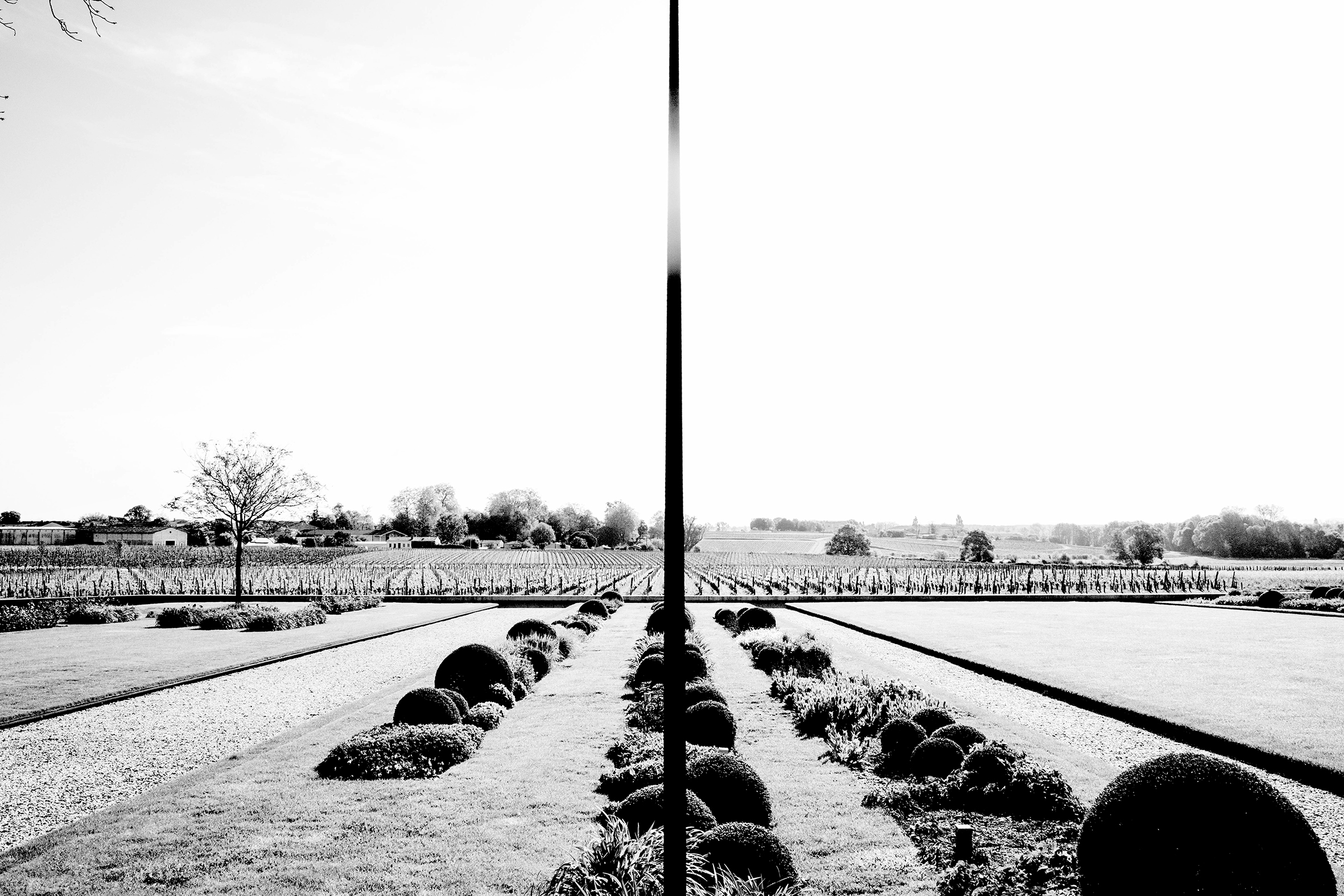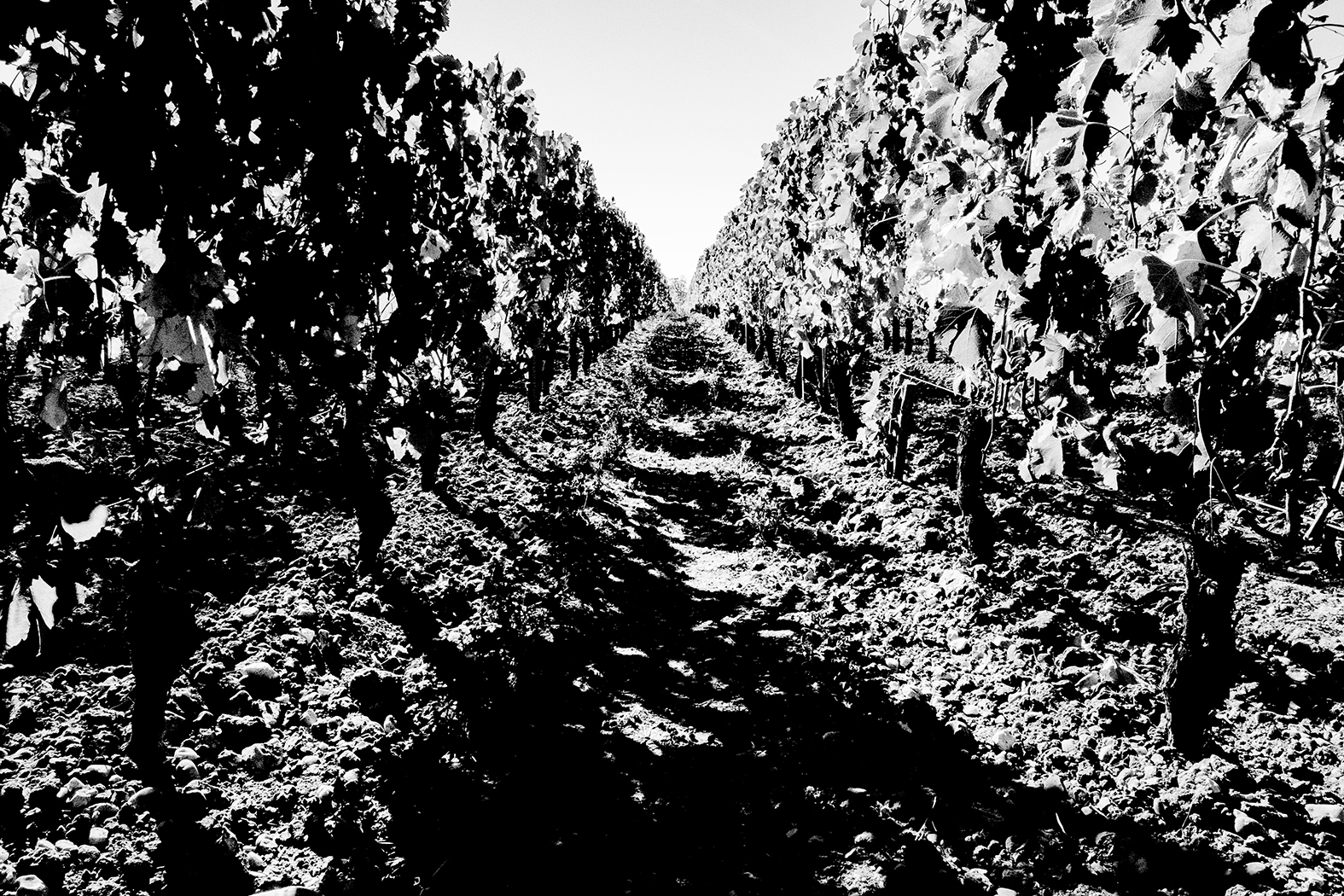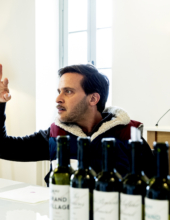07th Mar 2024
In February this year, I tasted over one hundred of the major Bordeaux reds and sweet wines from the 2014 vintage. Most of these wines were tasted blind with the Southwold Group as part of our annual 10-Years-On exercise.
Back to the Future
I was more bullish than others in the Southwold Group about the 2014s. In the context of recent vintages, it’s a bit like Back to the Future—an old-school growing season crafted with a modern approach to tannin extraction and élevage. For this reason, I believe the 2014s are a style that lovers of classic, traditionally styled Bordeaux will want to forage. The wines emphasize savory/earthy aromas and flavors with a chewiness to the tannins, which stand apart from the richer, fruitier, plusher styles of recent vintages such as 2015, 2016, 2018, 2019, 2020, and 2022. Most of the 2014 reds already show abundant tertiary characters and are ready for drinking now, although the top-top wines still have at least a couple more decades of cellaring potential.
The 2014 Growing Season
The 2014 vintage was born from a warm, relatively wet winter. Budbreak was early, occurring in mid-March, but this precocious start would be short-lived. May was rainy, triggering outbreaks of mildew and delaying flowering. Still, coulure turned out to be only a minor problem, mainly affecting Merlot. June brought heat spikes and hailstorms, causing isolated incidents of damage. Then July and August saw unusually cool, cloudy weather. Bouts of rain sparked more outbreaks of mildew. The lack of heat and sunshine made for sluggish vines, further slowing the ripening. Veraison was dismally late, prolonged, and uneven.
The ripening prospects for red grapes were looking bleak come September 2014. Then the sun came out. The second half of September brought bright, warm conditions, continuing through most of October, essentially saving the vintage. Sporadic rainstorms brought a few showers throughout the region, although any detrimental impact from dilution appears to be slight. Merlot was harvested mainly from late September through mid-October, with the Cabernets following and continuing into late October/early November.
In the end, while a lot of the lost ripening time was made up thanks to a glorious stretch of sunshine and warmth in September and October, the red berries achieved suitable ripeness but not perfect ripeness. The fruit profile was on the fresher, crunchier, red-berried side. Tannins were, in most cases, ‘al dente’ (chewy). Yet, generally speaking, the tannins were well-managed, meaning most winemakers went lighter on extraction. Aging was sensibly adapted to the moderate weight and intensity of the wines with less new oak usage and abbreviated time in barrels.

Drinking Windows
How are the 2014 reds aging? While I was never under any illusions that the 2014s would be for the very long haul, they do seem to be aging a little faster than I had anticipated. Not that this is necessarily bad—many wines are hitting their strides right now. This said, there are a good number of top wines, especially from the Médoc, such as Mouton Rothschild, Margaux, and Montrose, that still have a good 20 years of aging potential left, so don’t write these beauties off too soon. I’ve included drinking windows with all these new reviews.
Sauternes
In Sauternes, the Indian summer that saved the red wines in 2014 was a mixed blessing—great for achieving ripeness but not so great for the onset of Botrytis. Finally, rains came in the second week of October, triggering rapid, widespread noble rot. The result is concentrated, relatively rich, sweet wines of consistently high quality. This tasting revealed that the top Sauternes and Barsac 2014s are aging slowly and gracefully—well worth seeking out!
2014 Bordeaux Top 5 Wine Collectibles
Chateau Montrose 2eme Cru Classe, Saint-Estephe
Chateau Margaux Premier Cru Classe, Margaux
Chateau Mouton Rothschild Premier Cru Classe, Pauillac
Vieux Chateau Certan, Pomerol
Chateau Climens Premier Cru Classe, Barsac
2014 Bordeaux Top 5 Wine Bargains (Under $100)
Chateau Larcis Ducasse Premier Grand Cru Classe B, Saint-Emilion Grand Cru
Chateau Sociando-Mallet, Haut-Medoc
Chateau Tronquoy-Lalande, Saint-Estephe
Chateau d'Armailhac 5eme Cru Classe, Pauillac
Chateau Doisy-Vedrines 2eme Cru Classe, Barsac
The Tasting
Most of the reviews in this report are based on tastings performed in London in February this year with the Southwold group. The group includes a representative from just about every major fine wine merchant in the UK, Bordeaux expert Bill Blatch (who liaises with the Châteaux to secure the samples), and two other wine critics. The tasting was hosted at the office of Farr Vintners.
Twenty-seven of these wines were not tasted blind but were offered for tasting by Farr Vintners the day before the blind tasting. These include Roc de Cambes, Les Asteries, Clos des Jacobins, Clos de l'Oratoire, Couvent des Jacobins, Le Dragon de Quintus, Le Dome, Fonplegade, Gracia, Grand Mayne, Larmande, Magrez Fombrauge, Monbousquet, Quinault L'Enclos, Le Bon Pasteur, Nenin, Branas Grand, Poujeau, Chasse-Spleen, Cantenac Brown, Marquis d'Alesme, du Tertre, Clos du Marquis, Pavillon de Leoville Poyferre, Lynch-Moussas, and Les Tourelles de Longueville.
Tasting blind is an eye-opening endeavor, highlighting some great wines that may have previously been missed and others that couldn’t keep their promises. This said, we taste fast at Southwold, and sometimes greatness can be over or underestimated, or bottles just don’t show as they should. It can be hard to say if something doesn’t look right when you don’t know what it is at the time of tasting. Wines that are obviously out of condition are flagged by members of the group, and a second bottle is opened if available. If no second bottle is available, we don’t score.
Usually, if I taste a wine with the Southwold Group that is far off my previous impressions, I look to taste it again before publishing the report to ensure we have accurate tasting notes in the TWI database. I did not have the opportunity to do this for several wines tasted this time, so I have published these tasting notes as I saw them with question marks as the scores and will taste the wines again as soon as I have the opportunity. However, there were two 2014s that I tasted at least twice each within the last few months—Ducru-Beaucaillou and Léoville-Barton. I have l left these recent reviews unchanged in our database. There was one wine that I knocked back a couple of points after its identity was revealed and upon retasting it: Château Tronquoy-Lalande (recently renamed Château Tronquoy). This is the sibling property of Château Montrose, also located in Saint-Estèphe. Like Montrose, it was purchased by the Bouygues family in 2006 and has been privy to considerable investment and improvements since then. In my original blind assessment, I gave Montrose 98 points and Tronquoy-Lalande 97. After retasting, there is no doubt that the 2014 Tronquoy-Lalande is outstanding, yet a 95 score is more accurate. What is clear is that this wine is punching well above its weight and is an absolute bargain, while Montrose deserves the crown for wine of the vintage—bravo to the Bouygues family!
The Southwold Group scores wines using the 20-Point system. I have used the 20-point system many times before for show-judging, yet I feel 100-point scoring is more accurate. Therefore, I scored the wines out of 100 at this tasting and then converted them to the 20-Point system for submitting scores to the group, using the following conversion calculations of my creation.
20 = 100
19.5 = 99
19 = 97-98
18.5 = 95-96
18 = 93-94
17.5 = 91-92
17 = 90
16.5 = 88-89
16 = 86-87
15.5 = 84-85
15 = 82-83
14.5 = 80-81
14 = 78-79
13.5 = 76-77
13 = 74-75
12.5 = 72-73
12 = 70-71
11.5 = 65-69
11 = 60-64
10.5 = 55-59
10 = 50-54

To follow are my scores out of 20 that were submitted to Southwold Group (regrouped into alphabetical order). The scores I gave out of 100 are included with my reviews in the database, with the exceptions noted above. The tasting notes published with this article are the same as the original reviews I typed when tasting with the Southwold Group, edited only for grammar and to add the wine name and vintage.
| Alter Ego | 15.5 |
| Angelus | 18.5 |
| Armailhac | 18.5 |
| Ausone | 17.5 |
| Batailley | 15.5 |
| Beausejour Becot | 15.5 |
| Beausejour Duffau | 15.5 |
| Belair Monange | 18 |
| Beychevelle | 18 |
| Branaire Ducru | 18 |
| Brane Cantenac | 17.5 |
| Calon Segur | 18 |
| Canon | 17.5 |
| Canon Gaffeliere | 17.5 |
| Cantemerle | 16 |
| Carmes Haut Brion | 16 |
| Chapelle de la Mission H-B | 15 |
| Cheval Blanc | 18 |
| Clarence Haut Brion | 17 |
| Clerc Milon | 16.5 |
| Climens | 19 |
| Clinet | 16.5 |
| Clos Haut Peyraguey | 18 |
| Clos l’Eglise | 17 |
| Conseillante | 18 |
| Cos d’Estournel | 15.5 |
| Dame de Montrose | 16 |
| Doisy Daene | 18.5 |
| Doisy Vedrines | 18.5 |
| Domaine de Chevalier | 16 |
| Ducru Beaucaillou | 14.5 |
| Duhart Milon | 17.5 |
| Eglise Clinet | 16 |
| Evangile | 17 |
| Fargues | 17.5 |
| Fieuzal | 16.5 |
| Figeac | 18.5 |
| Fleur de Gay | 15.5 |
| Fleur Petrus | 17 |
| Forts de Latour | 15 |
| Gaffeliere | 17 |
| Gay | 15.5 |
| Gazin | 15.5 |
| Giscours | 16 |
| Gloria | 14.5 |
| Grand Puy Lacoste | 15 |
| Gruaud Larose | 17 |
| Guiraud | 17.5 |
| Haut Bailly | 15 |
| Haut Batailley | 16.5 |
| Haut Brion | 18 |
| Haut Marbuzet | 17.5 |
| Issan | 17.5 |
| Kirwan | 14.5 |
| Lafite | 17.5 |
| Lafleur | 18 |
| Lafon Rochet | 16.5 |
| Lagrange | 17.5 |
| Lagune | 14.5 |
| Langoa Barton | 15.5 |
| Larcis Ducasse | 18.5 |
| Larrivet Haut Brion | 15.5 |
| Lascomes | 17.5 |
| Latour | 18 |
| Le Pin | 18.5 |
| Leoville Barton | 15.5 |
| Leoville Lascases | 15.5 |
| Leoville Poyferre | 17.5 |
| Lynch Bages | 18 |
| Malartic Lagraviere | 15.5 |
| Malescot | 15.5 |
| Margaux | 19 |
| Meyney | 15 |
| Mission Haut Brion | 18.5 |
| Mondotte | 15.5 |
| Montrose | 19 |
| Mouton Rothschild | 19 |
| Ormes de Pez | 16 |
| Pagodes de Cos | 16.5 |
| Palmer | 18 |
| Pape Clement | 17.5 |
| Pavie | 17.5 |
| Pavie Macquin | 17.5 |
| Pavillon Rouge | 17 |
| Petit Village | 15 |
| Petrus | 17.5 |
| Phelan Segur | 16.5 |
| Pichon Baron | 18.5 |
| Pichon Lalande | 17.5 |
| Pontet Canet | 15 |
| Prieure Lichine | 16.5 |
| Quintus | 17 |
| Rauzan Segla | 16.5 |
| Rayne Vigneau | 18 |
| Reserve Comtesse | 17.5 |
| Rieussec | 18 |
| Rouget | 17.5 |
| Siran | 16.5 |
| Smith Haut Lafitte | 15.5 |
| Sociando Mallet | 18.5 |
| St Pierre | 17 |
| Suduiraut | 17.5 |
| Talbot | 15 |
| Tertre Roteboeuf | 16.5 |
| Tour Blanche | 17.5 |
| Tronquoy Lalande | 19 |
| Troplong Mondot | 18.5 |
| Trotanoy | 17.5 |
| Trottevieille | 17 |
| Valandraud | 18.5 |
| Vieux Chateau Certan | 19 |
| Violette | 15 |
| Yquem | 18.5 |
-
Article & Reviews by Lisa Perrotti-Brown
Photography by Johan Berglund

PRODUCERS IN THIS ARTICLE
> Show all wines sorted by scoreMore articles

Bordeaux 2023 Preliminary Vintage Report and Reviews from Barrel
29th Apr 2024
56 tasting notes

2021 Bordeaux in Bottle and A Modest Proposal
24th Apr 2024
599 tasting notes

Pilcrow’s New Releases
18th Apr 2024
7 tasting notes

Bordeaux 2023 Primeurs Photo Essay
18th Apr 2024
0 tasting notes
Show all articles